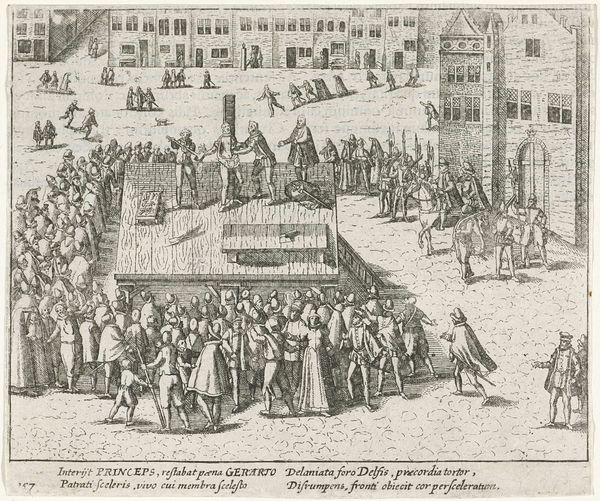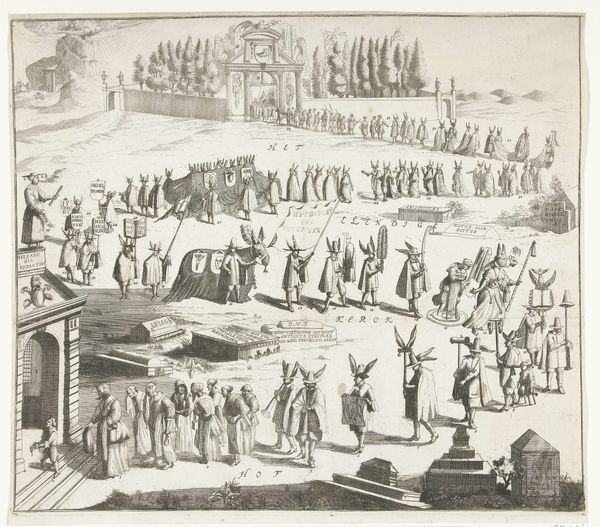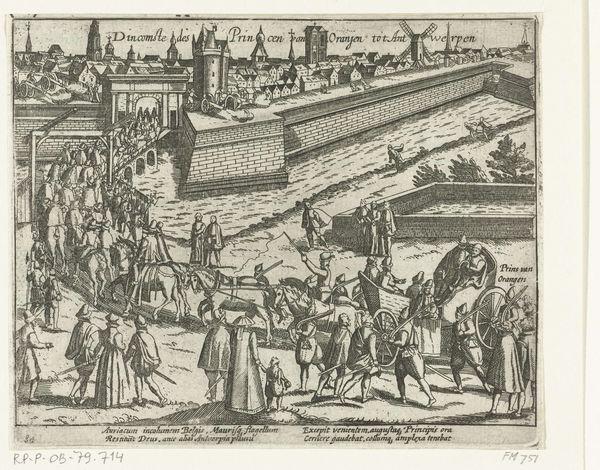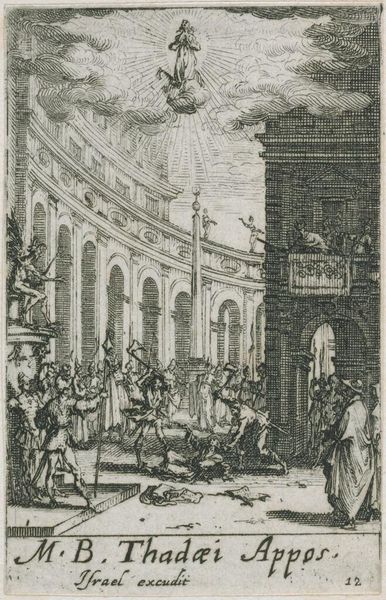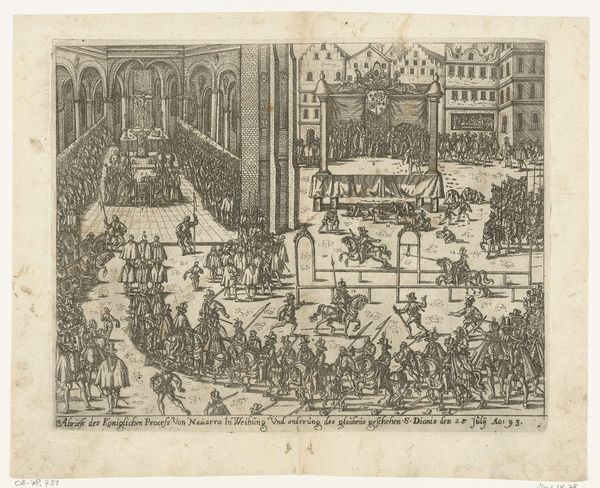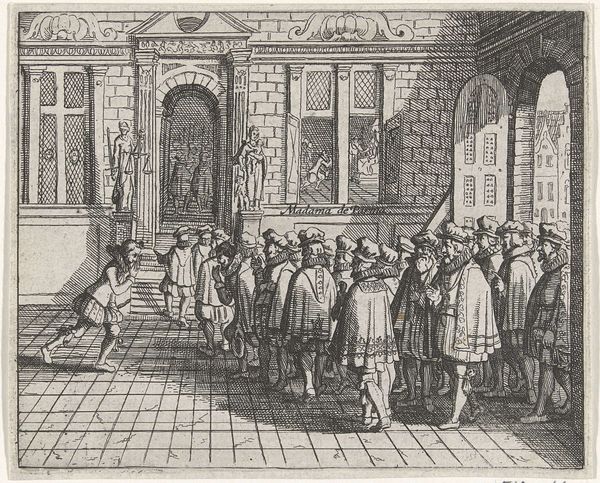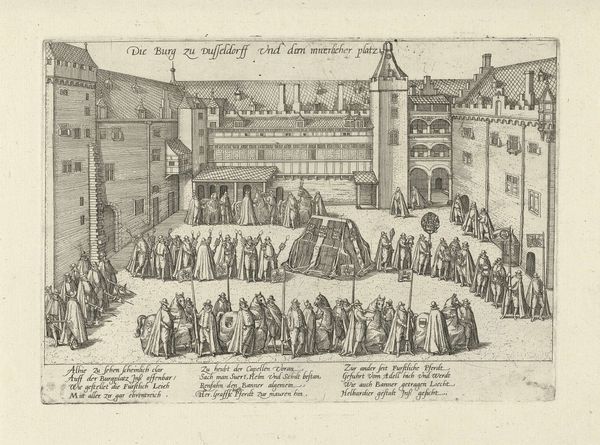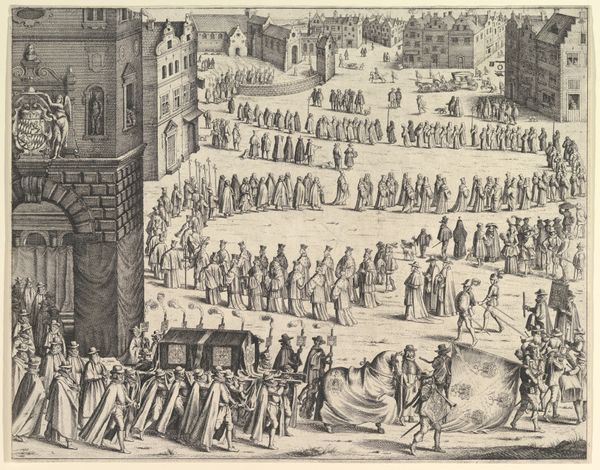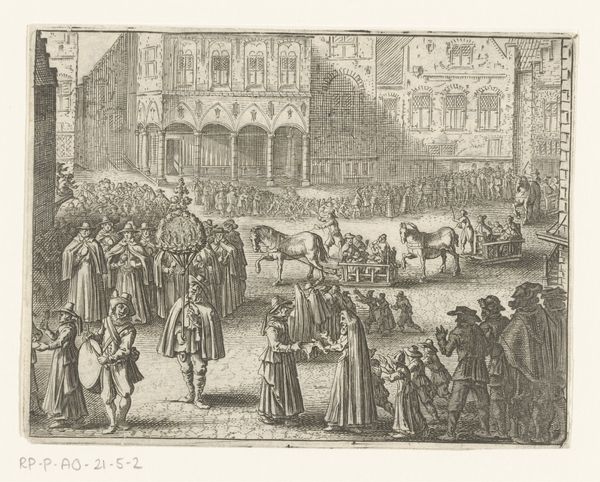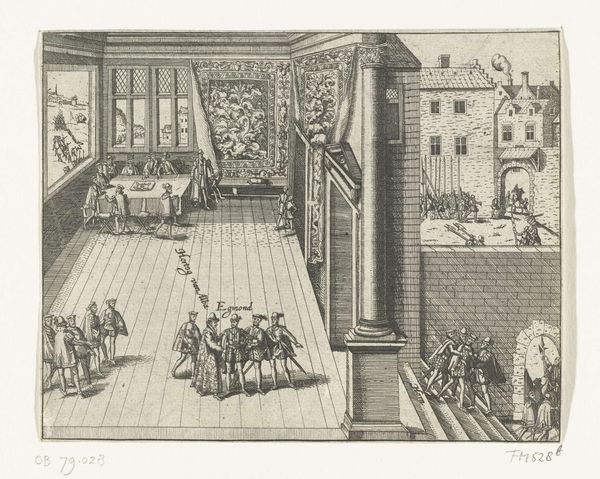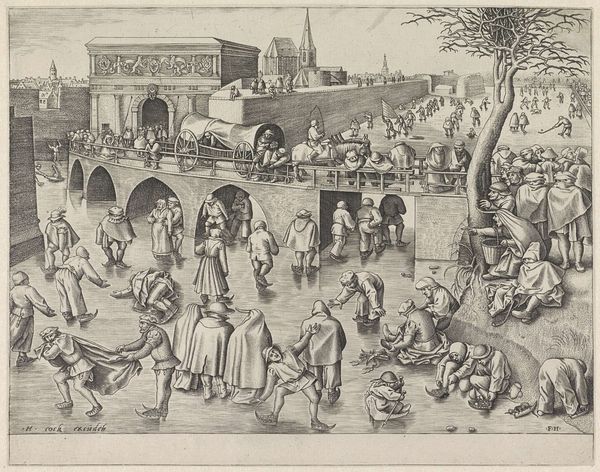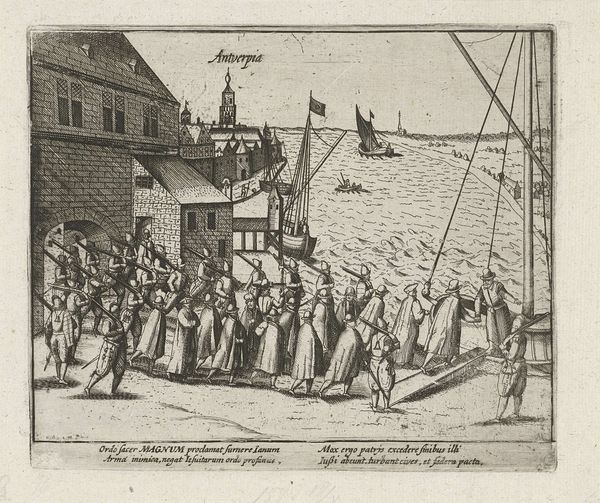
print, engraving
#
medieval
#
narrative-art
# print
#
pen illustration
#
pen sketch
#
old engraving style
#
figuration
#
linework heavy
#
pen-ink sketch
#
line
#
pen work
#
history-painting
#
engraving
Dimensions: height 125 mm, width 160 mm
Copyright: Rijks Museum: Open Domain
Curator: Here we have a work whose graphic quality I find captivating. Produced between 1613 and 1615 by an anonymous artist, this print at the Rijksmuseum is entitled "Terechtstelling van monniken te Gent wegens sodomie, 1578" – or, "Execution of Monks in Ghent for Sodomy, 1578". Editor: My first reaction is one of controlled chaos. The density of the figures, contrasted against the stark architectural setting creates a scene that is visually… well, rather violent. Curator: Indeed. Structurally, we see a composition cleaved into distinct spatial zones. The use of line – particularly the linework so heavy and clearly seen here – to define and differentiate these planes creates a very powerful reading experience. Semiotically, it’s all about dividing things. Editor: The choice of subject reinforces this interpretation of division, of course. This print captures a pivotal moment in religious history. Public executions served as potent symbolic rituals meant to cleanse the community. This specific execution – the burning of monks accused of sodomy – reflects deep cultural anxieties about morality, social order, and religious dogma. The image functions as a harsh visual sermon, condemning those who deviated from established norms. Curator: Precisely! And look how the formal aspects reinforce that very dogma. The perspective, slightly skewed, enhances the dramatic tension, thrusting the viewer into the role of both witness and judge. The limited tonal range sharpens the contours and emphasizes the details – such as the varied dress. Notice the gaze. Are they complicit? Condemning? Detached? Editor: Absolutely. The artist doesn't present a single, unified point of view. Instead, we find an accumulation of micro-narratives, echoing diverse individual and social reactions to a singular historical spectacle. Each gesture, each turn of the head holds within it a unique story, and perhaps even differing interpretations of faith and order. This divergence undermines the absoluteness the authorities attempt to convey through the execution. Curator: A superb observation, Editor. We can both appreciate how form serves not merely as representation, but as a complex system that reflects and critiques the era’s socio-cultural dynamics. Editor: Indeed, it highlights the power of symbolism, reminding us how much history and feeling an image can condense.
Comments
No comments
Be the first to comment and join the conversation on the ultimate creative platform.

